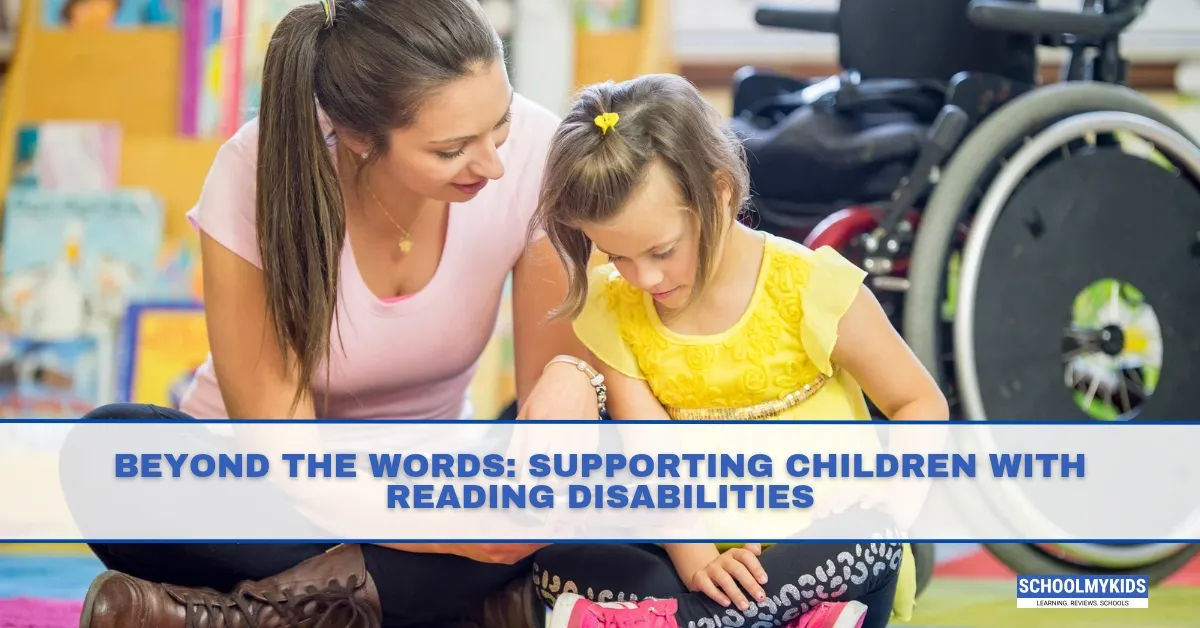Reading is a skill that opens doors to learning, creativity, and communication. But for some children, reading doesn’t come easily. If your child struggles with reading, you’re not alone. More importantly, their struggles do not mean they are less smart or less capable. Reading disabilities are brain-based, and with the right support, every child can make progress and even thrive.
The "Big 5" Reading Skills: What Every Child Needs
Understanding the foundation of reading helps identify where support is needed. Every child develops these five critical skills:
- Phonemic Awareness: Hearing and playing with sounds in words (like rhyming or clapping syllables).
- Phonics: Connecting letters to sounds.
- Vocabulary: Knowing the meaning of words.
- Fluency: Reading accurately, quickly, and expressively
- Comprehension: Making meaning from text
A reading disability typically involves challenges in one or more of these areas.
What Are Reading Disabilities?
Reading disabilities are learning differences that affect how a child processes written words and text. These are not a sign of low intelligence or laziness. In fact, many children with reading disabilities are creative, curious, and motivated; they just learn differently.
Let's break down the major types so you can better understand what your child might be experiencing:
Dyslexia: More Than Just Letter Reversals
Dyslexia is perhaps the most well-known reading disability, affecting up to 1 in 5 children in the United States. But it's often misunderstood.
If your child has dyslexia, they might:
- Struggle to connect letters with their sounds
- Have difficulty sounding out new words
- Read slowly and laboriously
- Avoid reading aloud at all costs
- Show amazing creativity and problem-solving skills in other areas
"Reading feels like trying to catch slippery fish with my hands. I know the words are there, but they keep swimming away before I can grab them."
Reading Comprehension Difficulties: Beyond Decoding
Some children can read the words perfectly but struggle to understand what they've read. If your child can pronounce "The cat sat on the mat" but can't tell you what happened in that sentence, they may have a comprehension issue.
Signs include:
- Difficulty remembering what was just read
- Trouble making inferences or "reading between the lines."
- Challenges connecting new information to prior knowledge
- Problems identifying main ideas or summarizing
Fluency Challenges: The Struggle for Smooth Reading
Reading fluency is the ability to read properly, quickly, and with expression. Children with fluency issues may read in a choppy, word-by-word manner that makes comprehension even harder.
"Listening to my kid read is like hearing someone navigate a bumpy road. She stops and starts, loses her place, and by the end of the paragraph, she's forgotten what the beginning was about."
Hyperlexia: When Advanced Reading Doesn't Equal Understanding
In contrast to dyslexia, children with hyperlexia often learn to read early and may have exceptional word recognition skills. However, they typically struggle with comprehension and may have difficulties with social communication.
There are three types:
- Type 1: Early readers without disabilities
- Type 2: Often associated with autism spectrum disorder
- Type 3: Early readers with initially delayed verbal language that improves over time
Tailored Support Strategies for Different Reading Disabilities
For Children with Dyslexia:
- Structured, systematic phonics instruction: Programs like Orton-Gillingham, Wilson Reading System, or Barton offer multisensory approaches that strengthen neural pathways.
- Audiobooks and text-to-speech tools: These allow access to grade-level content while decoding skills develop.
- Repeated reading of the same book: This builds confidence and fluency.
- Word games focusing on sounds: Games like Scrabble or Boggle can make phonemic awareness fun.
For Children with Comprehension Difficulties:
- Visual organizers: Mind maps and story webs help organize information visually.
- Pre-reading discussions: Talk about the topic before reading to activate prior knowledge.
- Stop-and-think prompts: Pause regularly during reading to check understanding.
- Role-playing stories: Acting out narratives helps cement understanding.
For Children with Fluency Issues:
- Partner reading: Taking turns reading aloud with a supportive adult.
- Reading with audio support: Reading along while listening to the text being read.
- Practicing with decodable texts: Books specifically designed with words the child can sound out.
- Repeated reading: Reading the same paragraph multiple times to build speed and confidence.
For Children with Hyperlexia:
- Visual supports for comprehension: Pictures paired with text or graphic organizers.
- Explicit teaching of idioms and figurative language: Explaining phrases like "it's raining cats and dogs."
- Social stories: Using stories to explain social situations and expectations.
- Focus on the "why" and "how": Encouraging deeper thinking beyond facts.
Common Mistakes in Supporting Children with Reading Disabilities
Well-meaning adults often make these errors:
1. The "Try Harder" Trap
Telling a child with dyslexia to "just focus more" is like telling someone with poor vision to "just look harder." Their brain processes written language differently, and no amount of effort will change that fundamental wiring.
2. One-Size-Fits-All Approaches
Each reading disability requires a specific approach. What works brilliantly for a child with dyslexia might be completely ineffective for a child with comprehension difficulties.
3. Focusing Only on School Reading
Reading happens everywhere! Limiting support to formal educational settings misses countless opportunities for natural learning and confidence-building.
4. Neglecting Emotional Support
The psychological impact of reading disabilities can be devastating. Children may feel "stupid" or develop anxiety around reading. Addressing these aspects is just as important as the academic intervention.
5. Waiting Too Long for Help
"Let's see if they grow out of it," can cost precious years of development. Early intervention makes an enormous difference in outcomes.
Creating a Supportive Environment at Home
Your attitude and approach make all the difference:
- Celebrate strengths: Maybe your child struggles with reading but excels at science or art. Make time for activities that showcase their talents.
- Read together daily: Even for just 10 minutes, in ways that feel comfortable and enjoyable.
- Model reading enjoyment: Let your child see you reading for pleasure.
- Create a print-rich environment: Surround your child with interesting reading materials on topics they love.
- Use technology wisely: Speech-to-text and text-to-speech tools can be game-changers.
Working Effectively with Schools
Building a partnership with educators is essential:
- Request comprehensive evaluation: This should include phonological processing, decoding, fluency, comprehension, and writing.
- Understand available services: Learn about IEPs (Individualized Education Programs) and 504 plans.
- Communicate regularly: Keep teachers informed about what works at home.
- Ask for accommodations: Things like extra time, reduced homework, or alternative assessment methods can level the playing field.
- Be a positive advocate: Approach meetings with a collaborative mindset.
When to Seek Professional Help
Don't hesitate to reach out for professional support if:
- Your child shows persistent difficulties despite home support.
- Reading challenges are affecting their self-esteem or mental health.
- There's a family history of reading disabilities.
- Your instincts tell you something isn't right.
Early intervention often makes a huge difference in outcomes. Talk to your child's pediatrician, school psychologist, or reading specialist to discuss evaluation options and create a support plan customized to your child's unique needs.
Conclusion
Supporting a child with reading disabilities is a long journey with ups and downs. Progress may be slower than you'd hope, and there will be plateaus and even occasional backsliding. That's normal and expected.
What matters most is that your child knows their worth isn't measured by how quickly or easily they read. With the right support, children with reading disabilities can become confident, successful readers who develop a lifelong love of learning.









Be the first one to comment on this story.